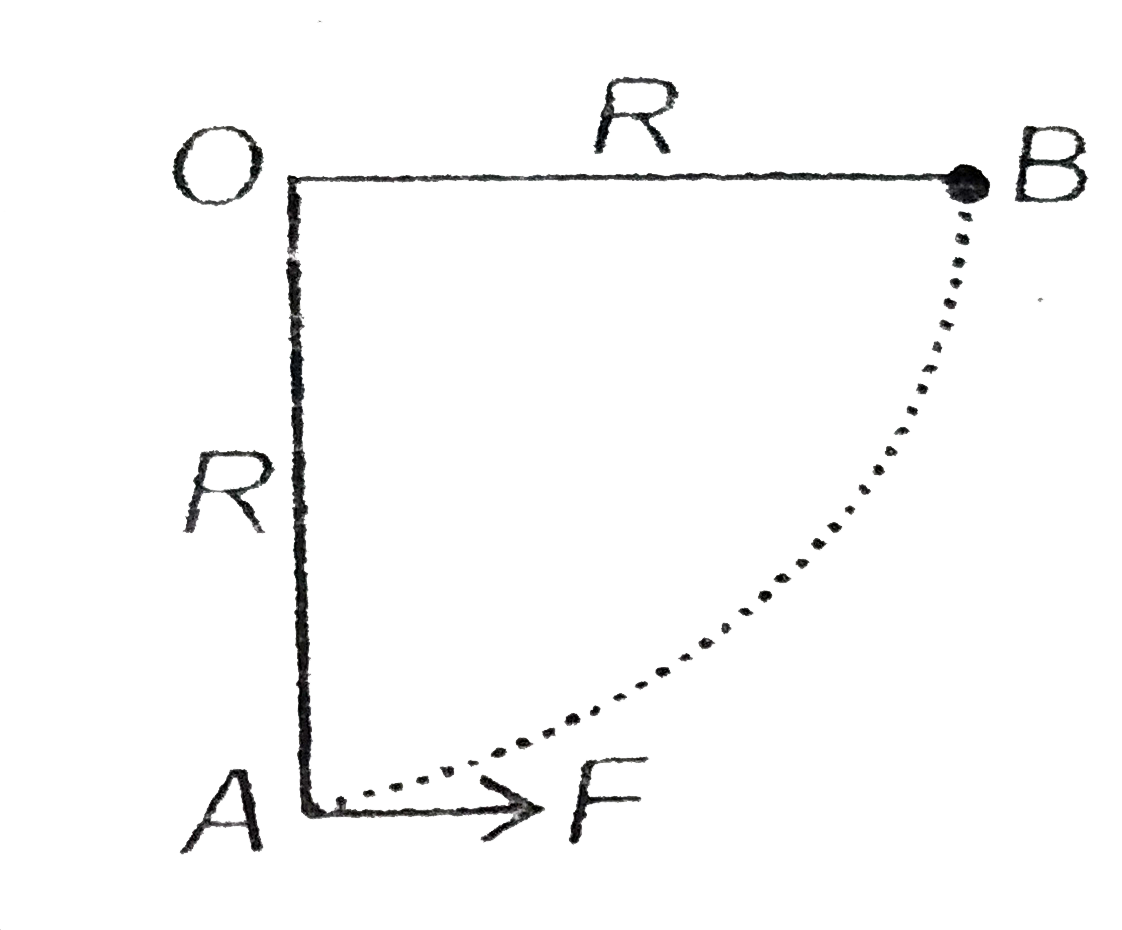A bob of mass m is pulled along a circular are by means of a constant horizontal force P as shown. Work done in lifting the bob from A to B is

mgl
Pl2
Pl
√3Pl2
The correct Answer is:B
Step by step video & image solution for A bob of mass m is pulled along a circular are by means of a constant horizontal force P as shown. Work done in lifting the bob from A to B is by Physics experts to help you in doubts & scoring excellent marks in Class 12 exams.
Updated on:21/07/2023Topper's Solved these Questions
- WORK, ENERGY AND POWERBOOK - AAKASH INSTITUTECHAPTER - WORK, ENERGY AND POWEREXERCISE - SECTION-B (SUBJECTIVE TYPE QUESTIONS) (ONE OPTIONS IS CORRECT)
44 Videos
- WORK, ENERGY AND POWERBOOK - AAKASH INSTITUTECHAPTER - WORK, ENERGY AND POWEREXERCISE - SECTION-C (OBJECTIVE TYPE QUESTIONS) (MORE THAN ONE OPTIONS ARE CORRECT)
16 Videos
- WORK, ENERGY AND POWERBOOK - AAKASH INSTITUTECHAPTER - WORK, ENERGY AND POWEREXERCISE - TRY YOURSELF
95 Videos
- WAVESBOOK - AAKASH INSTITUTECHAPTER - WAVESEXERCISE - ASSIGNMENT ( SECTION-D ( Assertion - Reason Type Questions ))
12 Videos
Similar Questions
A block of mass 0.4kg is pulled along the curve path CAN slowly by a tangential force as shown in figure. The work done by the applied force when the block moves from A to B is

View Solution
A block of mass 1 kg is pulled slowly along the curve path ACB by a tangential force as shown in figure. The magnitude of work done by the frictional force when the block moves from A to B is
View Solution
Knowledge Check
A block of mass 2 kg is pulled through 3 m by a constnat horizontal force of 10N, along a frictionless horizontal table. What is the work doen by (i) the applied force and (ii) the gravitational force?
A20N,60NB30N,15NC30N,zeroD10n,5NA conical pendulum consists of a bob of mass m in motion in a circular path in a horizontal plane as shown in figure. During the motion, the supporting wire of length l. Maintains a constant angle θ with the vertical. The magnitude of the angular momentum of the bob about the vertical dashed line is.
 .A(m2gl3cos4θsinθ)1/2B(m2gl3cos4θcosθ)1/2C(m2gl3sin3θcosθ)1/2D(m2gl3cos3θcosθ)1/2.
.A(m2gl3cos4θsinθ)1/2B(m2gl3cos4θcosθ)1/2C(m2gl3sin3θcosθ)1/2D(m2gl3cos3θcosθ)1/2.A block of mass m is pulled along a horizontal surface by applying a force at an angle θ with the horizontal. If the block travels with a uniform velocity and has a displacement d and the coefficient of friction is μ, then the work done by the applied force is
Aμmgdcosθ+μsinθBμmgdcosθcosθ+μcosθCμmgdsinθcosθ+μsinθDμmgdcosθcosθ−μsinθ
A block of mass m is placed on the block of mass M as shown in figure. The horizontal force →F acts on M during time interval t. If the horizontal surface is smooth, assuming no relative sliding between the blocks, find the
a. work done by friction on the blocks
b. work done by →F on the lower block
View SolutionA block of mass m is taken from A to B under the action of a constant force F. Work done by this force is

View SolutionA block of mass m is pulled slowly by a minimum constant force on a rough (μ) horizontal surface through a distance x. Find work done by force F.
View SolutionA pendulum bob of mass m is suspended at rest. A constant horizontal force F=mg starts acting on it. Find
(a) the maximum angular defection of the string.
(b) the maximum possible tension in the string.

View SolutionA block of mass 2 m is pulled along a horizontal frictionless surface by a rope of mass m as shown in the figure given. What force is exerted by the rope on the block ?

View Solution
